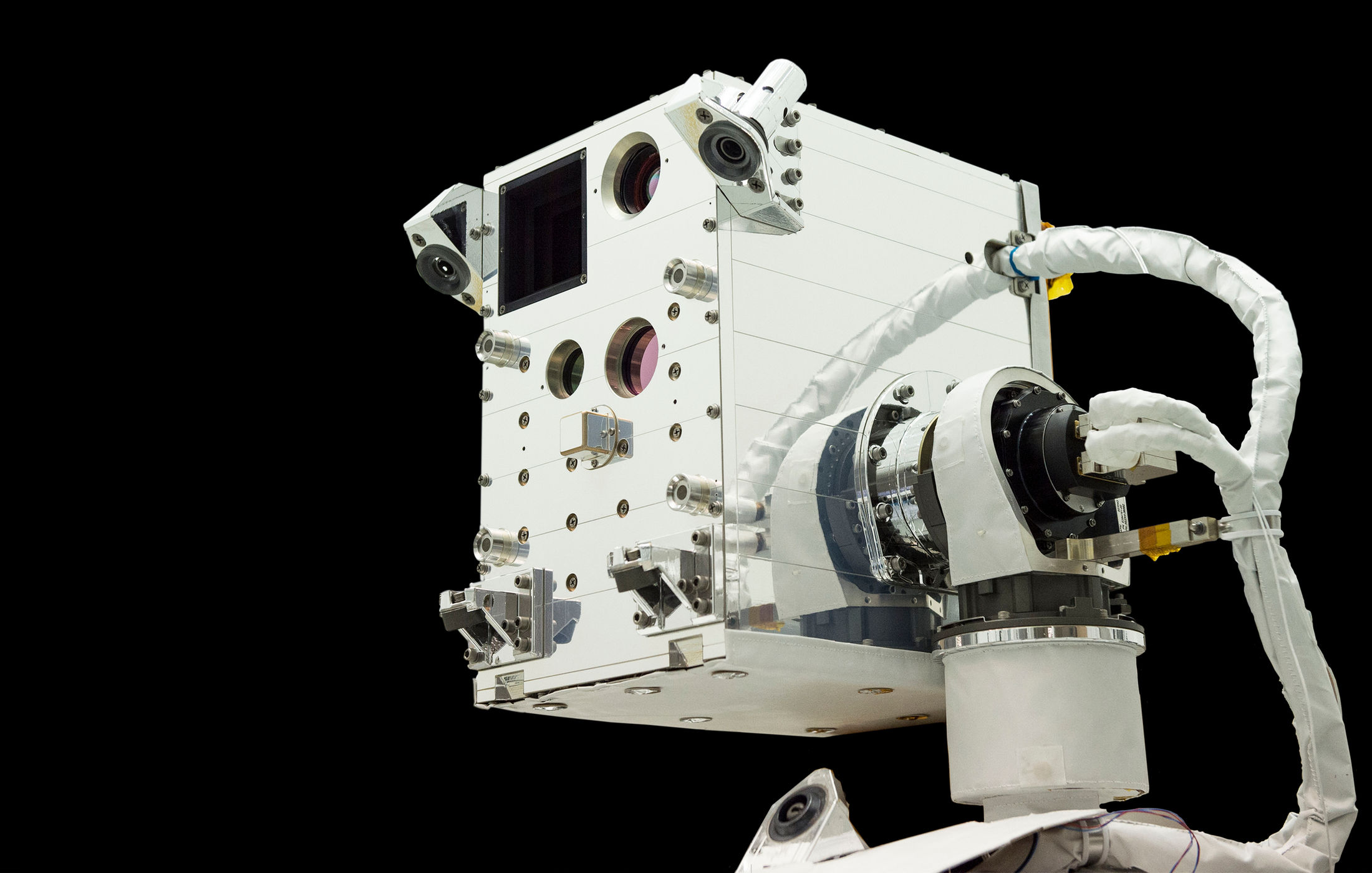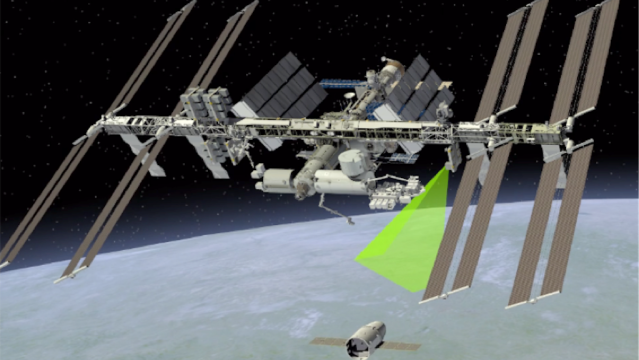Who would have guessed a little slice of Westeros would make its way to the final frontier? On Saturday, February 18, a SpaceX Falcon 9 rocket will carry NASA’s “three-eyed” Raven technology module to its destination just outside the International Space Station (ISS). Once there, Raven will use its sensors to collect information about incoming and outgoing spacecrafts so that, ultimately, NASA can develop navigation technology for autonomous rendezvous in space — something that’s a lot easier said than done.
Image: NASA’s Goddard Space Flight Center
“Two spacecraft autonomously rendezvousing is crucial for many future NASA missions and Raven is maturing this never-before-attempted technology,” Ben Reed, deputy division director for the Satellite Servicing Projects Division (SSPD) at NASA’s Goddard Space Flight Center said in a press release.
Five days after launch, the carry on luggage-sized Raven will be removed from the unpressurised “trunk” of a SpaceX Dragon capsule by Dextre, a self-repairing robotic arm attached to the ISS. Raven will hit the ground running and immediately start using its sensors and various algorithms to calculate the distance between itself and nearby spacecraft. The module will process this information to swivel in the direction of the vehicle in question in order to continue tracking it. NASA operators will be monitoring the all-seeing robot’s eye-tracking performance from the ground, making adjustments as necessary.

NASA’s Raven technology module. (Image: NASA’s Goddard Space Flight Center, Chris Gunn)
There are numerous benefits to creating a relative navigation system that requires no human intervention. For one thing, this technology would make refuelling and servicing satellites much easier. After all, if satellites are not repaired as soon as they need to be, or are never refuelled, they become space junk. NASA specifically hopes to use the technology developed on Raven to aid on an upcoming mission slated for the 2020s, in which robotic servicer Restore-L will refuel and relocate the Earth-monitoring Landsat 7 satellite. By removing human error and communications delays from the equation, Raven’s relative navigation system will help our future robotic space mechanics link up with their targets quickly and accurately.
[referenced url=”https://gizmodo.com.au/2016/12/nasa-is-building-a-170-million-space-mechanic/” thumb=”https://i.kinja-img.com/gawker-media/image/upload/t_ku-large/b5xifmzf52omrql71eax.jpg” title=”NASA Is Building A $US170 ($222) Million Space Mechanic” excerpt=”You would never buy a hundred million-dollar computer without a repair plan, but that’s exactly what NASA does when it sends costly satellites into space. To ensure that its prized eyes-in-the-sky don’t become the solar system’s most expensive e-waste, the space agency is now building a robot capable of repairing and refuelling satellites in orbit.”]
Raven is expected to carry out its duties on the ISS for the next two years. We wish this weird little bird all the best.
[NASA]
